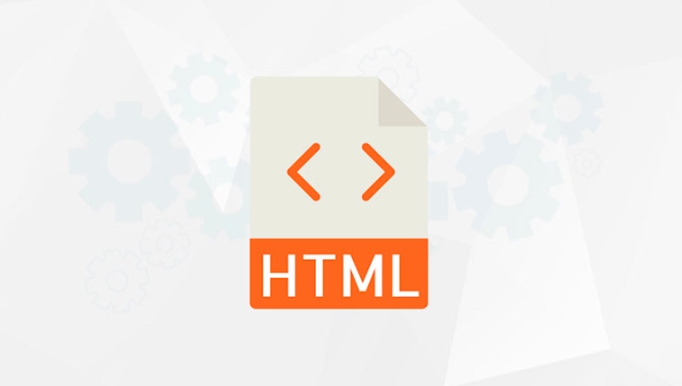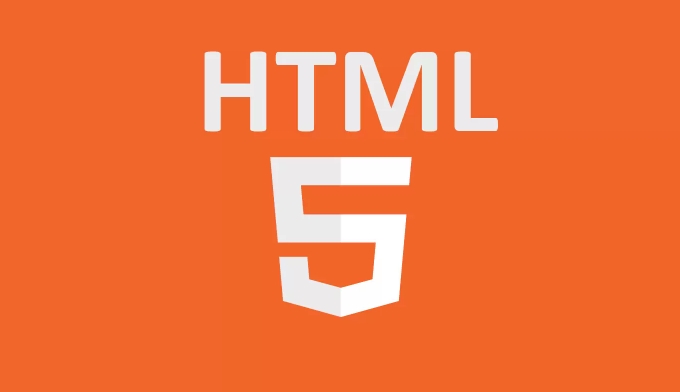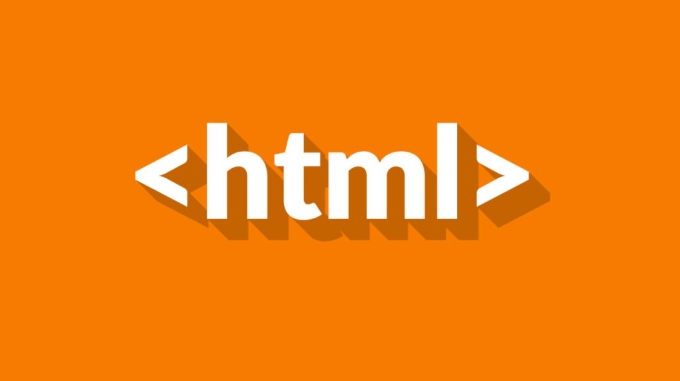The <mark> tag is used to highlight text semantically. It is suitable for searching keywords, teaching focus and other scenarios. The style is a yellow background by default. It can be customized through CSS, such as modifying the background color and adding class names to achieve diversified highlighting, but it should not be abused or used only for decoration.

Sometimes we need to highlight certain text on the web page, such as highlighting keywords in search results, or emphasizing key content in tutorials. At this time, in addition to using common <strong></strong> or <em></em> tags, HTML also provides a tag specifically for "tag" or "highlight" text: <mark></mark> .

It does not just bold or emphasize <em></em> <b></b> , but rather semantically explicitly "this passage is highlighted in the context". In the browser, the default style is yellow background with black text, which is very similar to the point you use to mark the keys on the book with a highlighter.
When is the most suitable time to use <mark></mark> ?
<mark></mark> is best used in places where you need to "visually highlight" on the page without affecting the semantic focus. for example:

- Keywords matching in search results
- Paragraphs that need attention in the article
- What to emphasize in teaching materials
- Keywords that are automatically marked when user input
For example, if you are doing a search page and the user searches for "HTML", you can mark the match like this:
<p>Learn the basics of <mark>HTML</mark> and quickly get started with web development. </p>
This not only highlights visually, but also has semantic value, which is helpful for SEO and accessibility.

Difference between <mark> and other emphasizing labels
Many people confuse <mark> , <strong> , <em> and even <b> and <i> , which all seem to change the text style, but have different semantics and uses.
-
<strong>: Emphasizes importance, has stronger semantics, and is usually displayed in bold. -
<em>: Emphasize the tone, usually shown in italics. -
<b>: Just bold, no semantics. -
<i>: Italic display, commonly used in foreign language words, technical terms, etc. -
<mark>: Highlight, semantically means "marked content", and the default style is a yellow background.
So if you just want the text to look more prominent but don't emphasize the tone or importance, then <mark> is a more suitable choice.
How to customize the style of <mark> ?
Although the default yellow background is sufficient for many scenarios, sometimes we hope it fits more into the overall design. At this time, you can use CSS to customize the style.
for example:
mark {
background-color: #ffdd99;
color: #333;
padding: 2px 4px;
border-radius: 4px;
} This will make the highlighted area softer or unify the website style. You can also add different class names to <mark> according to different uses and implement multiple highlight styles:
<mark class="highlight-blue">Blue highlight</mark>
Cooperate with CSS:
.highlight-blue {
background-color: #cce5ff;
color: #003366;
}This way you can use different styles of highlighting methods on the same page to meet different content needs.
Notes and common misunderstandings
-
<mark></mark>is not used for decoration, semantically it means "marked content", so don't abuse it. - If you just want to bold or italic, you should use
<b></b>or<i>or use CSS. - In terms of accessibility, try to avoid using pure colors to distinguish content, and it is best to match text or icons.
- When using dynamic content, be careful to avoid XSS attacks, especially highlighting content input by users.
Basically that's it. Using the <mark></mark> tag well can make your web page content clearer and more organized, and easier to be recognized by search engines and auxiliary tools.
The above is the detailed content of HTML `mark` Element for Highlighted Text. For more information, please follow other related articles on the PHP Chinese website!

Hot AI Tools

Undress AI Tool
Undress images for free

Undresser.AI Undress
AI-powered app for creating realistic nude photos

AI Clothes Remover
Online AI tool for removing clothes from photos.

Clothoff.io
AI clothes remover

Video Face Swap
Swap faces in any video effortlessly with our completely free AI face swap tool!

Hot Article

Hot Tools

Notepad++7.3.1
Easy-to-use and free code editor

SublimeText3 Chinese version
Chinese version, very easy to use

Zend Studio 13.0.1
Powerful PHP integrated development environment

Dreamweaver CS6
Visual web development tools

SublimeText3 Mac version
God-level code editing software (SublimeText3)

Hot Topics
 Applying Semantic Structure with article, section, and aside in HTML
Jul 05, 2025 am 02:03 AM
Applying Semantic Structure with article, section, and aside in HTML
Jul 05, 2025 am 02:03 AM
The rational use of semantic tags in HTML can improve page structure clarity, accessibility and SEO effects. 1. Used for independent content blocks, such as blog posts or comments, it must be self-contained; 2. Used for classification related content, usually including titles, and is suitable for different modules of the page; 3. Used for auxiliary information related to the main content but not core, such as sidebar recommendations or author profiles. In actual development, labels should be combined and other, avoid excessive nesting, keep the structure simple, and verify the rationality of the structure through developer tools.
 How to group options within a select dropdown using html?
Jul 04, 2025 am 03:16 AM
How to group options within a select dropdown using html?
Jul 04, 2025 am 03:16 AM
Use tags in HTML to group options in the drop-down menu. The specific method is to wrap a group of elements and define the group name through the label attribute, such as: 1. Contains options such as apples, bananas, oranges, etc.; 2. Contains options such as carrots, broccoli, etc.; 3. Each is an independent group, and the options within the group are automatically indented. Notes include: ① No nesting is supported; ② The entire group can be disabled through the disabled attribute; ③ The style is restricted and needs to be beautified in combination with CSS or third-party libraries; plug-ins such as Select2 can be used to enhance functions.
 Implementing Clickable Buttons Using the HTML button Element
Jul 07, 2025 am 02:31 AM
Implementing Clickable Buttons Using the HTML button Element
Jul 07, 2025 am 02:31 AM
To use HTML button elements to achieve clickable buttons, you must first master its basic usage and common precautions. 1. Create buttons with tags and define behaviors through type attributes (such as button, submit, reset), which is submitted by default; 2. Add interactive functions through JavaScript, which can be written inline or bind event listeners through ID to improve maintenance; 3. Use CSS to customize styles, including background color, border, rounded corners and hover/active status effects to enhance user experience; 4. Pay attention to common problems: make sure that the disabled attribute is not enabled, JS events are correctly bound, layout occlusion, and use the help of developer tools to troubleshoot exceptions. Master this
 Configuring Document Metadata Within the HTML head Element
Jul 09, 2025 am 02:30 AM
Configuring Document Metadata Within the HTML head Element
Jul 09, 2025 am 02:30 AM
Metadata in HTMLhead is crucial for SEO, social sharing, and browser behavior. 1. Set the page title and description, use and keep it concise and unique; 2. Add OpenGraph and Twitter card information to optimize social sharing effects, pay attention to the image size and use debugging tools to test; 3. Define the character set and viewport settings to ensure multi-language support is adapted to the mobile terminal; 4. Optional tags such as author copyright, robots control and canonical prevent duplicate content should also be configured reasonably.
 Best HTML tutorial for beginners in 2025
Jul 08, 2025 am 12:25 AM
Best HTML tutorial for beginners in 2025
Jul 08, 2025 am 12:25 AM
TolearnHTMLin2025,chooseatutorialthatbalanceshands-onpracticewithmodernstandardsandintegratesCSSandJavaScriptbasics.1.Prioritizehands-onlearningwithstep-by-stepprojectslikebuildingapersonalprofileorbloglayout.2.EnsureitcoversmodernHTMLelementssuchas,
 How to associate captions with images or media using the html figure and figcaption elements?
Jul 07, 2025 am 02:30 AM
How to associate captions with images or media using the html figure and figcaption elements?
Jul 07, 2025 am 02:30 AM
Using HTML sums allows for intuitive and semantic clarity to add caption text to images or media. 1. Used to wrap independent media content, such as pictures, videos or code blocks; 2. It is placed as its explanatory text, and can be located above or below the media; 3. They not only improve the clarity of the page structure, but also enhance accessibility and SEO effect; 4. When using it, you should pay attention to avoid abuse, and apply to content that needs to be emphasized and accompanied by description, rather than ordinary decorative pictures; 5. The alt attribute that cannot be ignored, which is different from figcaption; 6. The figcaption is flexible and can be placed at the top or bottom of the figure as needed. Using these two tags correctly helps to build semantic and easy to understand web content.
 How to embed content from another site using the html iframe tag?
Jul 04, 2025 am 03:17 AM
How to embed content from another site using the html iframe tag?
Jul 04, 2025 am 03:17 AM
Use tags to embed other website content into your own web page. The basic syntax is:, you can add width, height, and style="border:none;" to control the appearance; in order to achieve responsive layout, you can set the size through percentage or use containers to combine padding and absolute positioning to maintain the aspect ratio, while paying attention to cross-domain restrictions, loading performance, SEO impact, and security policies. Common uses include embedding maps, third-party forms, social media content and internal system integration.
 HTML for email templates tutorial
Jul 10, 2025 pm 02:01 PM
HTML for email templates tutorial
Jul 10, 2025 pm 02:01 PM
How to make HTML mail templates with good compatibility? First, you need to build a structure with tables to avoid using div flex or grid layout; secondly, all styles must be inlined and cannot rely on external CSS; then the picture should be added with alt description and use a public URL, and the buttons should be simulated with a table or td with background color; finally, you must test and adjust the details on multiple clients.






